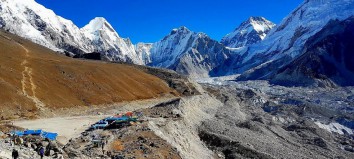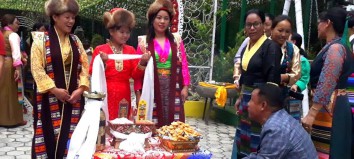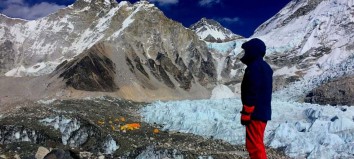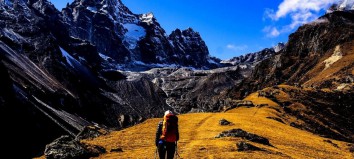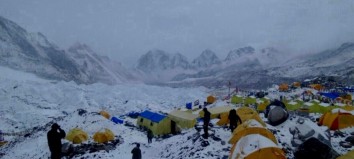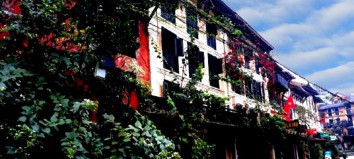Losar festival in Nepal
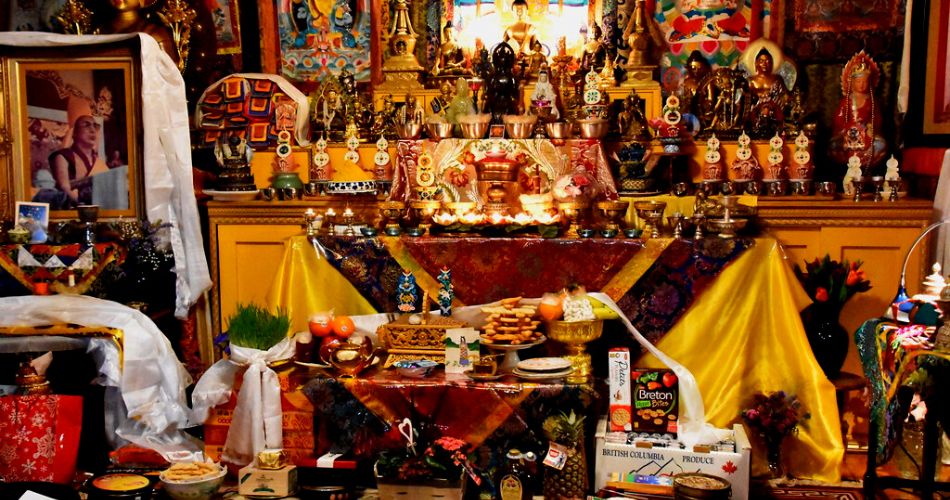
Losar is a traditional festival celebrated by the people of Tibet and other regions of the Himalayas, including Nepal. The festival falls on different dates each year, usually in February or March, and marks the beginning of the Tibetan New Year.
In Nepal, Losar is celebrated by the Sherpa and Tamang communities in the Himalayan region, particularly in the Solu Khumbu and Helambu areas. The festival is also observed by some other ethnic groups in different parts of the country.
During Losar, people engage in various traditional activities and rituals. One of the main rituals is the making of special barley flour cakes known as "kapse" and "khapse," which are often shaped like animals or other auspicious symbols. The cakes are then offered to deities and guests as a sign of good luck and prosperity.
Another important aspect of Losar is the practice of "Lama dancing," where people wear traditional costumes and perform a series of sacred dances to ward off evil spirits and bring good fortune.
Losar is a time for family gatherings, feasting, and socializing, and people exchange gifts and well-wishes with one another. It is also a time for deep spiritual reflection and renewal, with many people visiting monasteries and performing traditional Buddhist practices.
Overall, Losar is a vibrant and joyous celebration that reflects the rich cultural heritage of the people of the Himalayas.
How is Losar celebrated in Nepal?
Losar is celebrated in different ways by different communities in Nepal, but there are some common elements that are typically observed. Here are some of the ways Losar is celebrated in Nepal:
Preparations:
In the weeks leading up to Losar, people clean and decorate their homes, and prepare special foods and drinks for the festival.
Offering prayers and performing rituals:
On the day of Losar, people gather at monasteries and temples to offer prayers and perform traditional rituals. They also light butter lamps and burn incense to purify the environment and appease the gods.
Family gatherings:
Losar is a time for families to come together and celebrate. People dress up in traditional clothes, exchange gifts, and share special meals with their loved ones.
Traditional dances:
During Losar, people perform traditional dances like the Sherpa and Tamang dances, and the Tibetan "Cham" dance. These dances are believed to drive away evil spirits and bring good fortune.
Offering "sang" to deities:
Sang is a traditional offering made of roasted barley flour and other ingredients. During Losar, people prepare and offer sang to the deities and their ancestors, as a sign of respect and gratitude.
Displaying prayer flags:
During Losar, people hang prayer flags, known as "Lungta," outside their homes and in public places. These flags are believed to spread blessings and positive energy to the environment.
Overall, Losar is a time for joy, renewal, and spiritual reflection, and is celebrated with great enthusiasm by the people of Nepal.
Why is Losar celebrated in Nepal?
Losar is a traditional festival that has been celebrated for centuries by the people of the Himalayan region, including Nepal. The festival marks the beginning of the Tibetan New Year, and is also associated with the end of the winter season and the beginning of spring.
In Nepal, Losar is particularly important for the Sherpa and Tamang communities, who are among the indigenous peoples of the Himalayas. For these communities, Losar is a time to celebrate their cultural heritage and to renew their spiritual commitments.
Losar is also a time to express gratitude to the deities and ancestors, and to seek their blessings for the coming year. Many people visit monasteries and perform traditional Buddhist practices during the festival, as a way to purify the mind and cultivate positive qualities like compassion and wisdom.
Overall, Losar is celebrated in Nepal as a way to honor the past, celebrate the present, and look forward to the future with hope and optimism. It is a time for joy, reflection, and renewal, and is deeply rooted in the rich cultural traditions of the Himalayan region.
Why is Jamara kept on the first day of Losar?
Jamara is an important ritual of the Losar festival, especially in the context of the Nepali New Year, which is also celebrated around the same time as Losar. During the first day of Losar, a special ritual is performed where wheat, barley, and other seeds are planted in a tray filled with soil. These seeds are allowed to sprout, and once they do, they are known as Jamara.
Jamara is an important symbol of prosperity, good luck, and auspiciousness. It is believed that the growth of the Jamara foretells the fortunes of the coming year. The longer and greener the Jamara, the better the prospects for the future.
The planting of the seeds is done in the presence of a Lama (Buddhist priest) who recites prayers and mantras, seeking blessings and protection from the deities. The tray with the seeds is then placed in a warm and sunny place, and watered daily.
On the tenth day of Losar, the Jamara is cut and used in various rituals and ceremonies, such as the putting of tika (a mark of vermilion powder and rice) on the forehead, as a symbol of blessings, and as an offering to the deities.
Overall, the Jamara ritual is an important part of the Losar festival in Nepal, as it symbolizes the renewal of life and hope for the coming year, and serves as a reminder to embrace the values of compassion, wisdom, and generosity.
